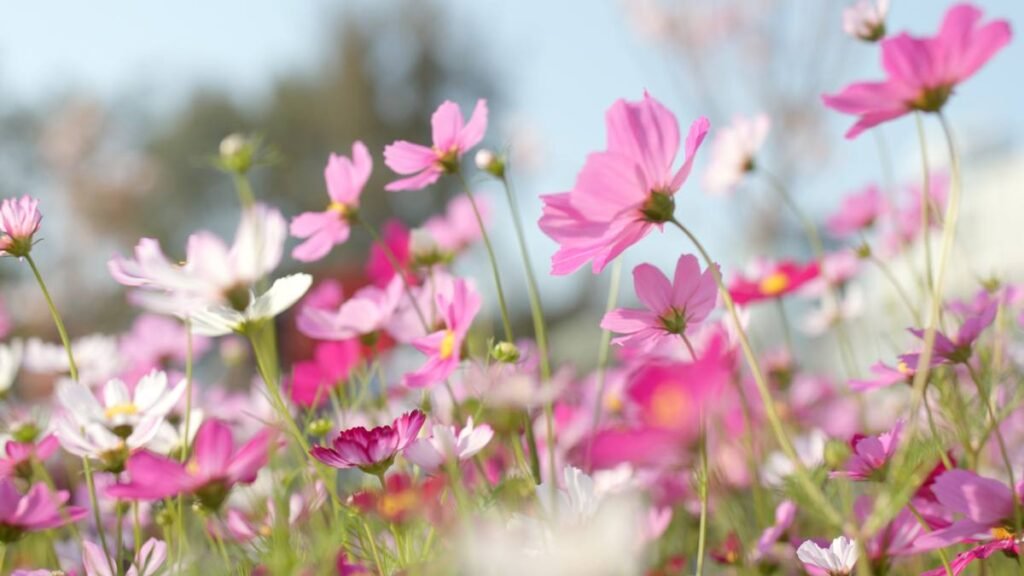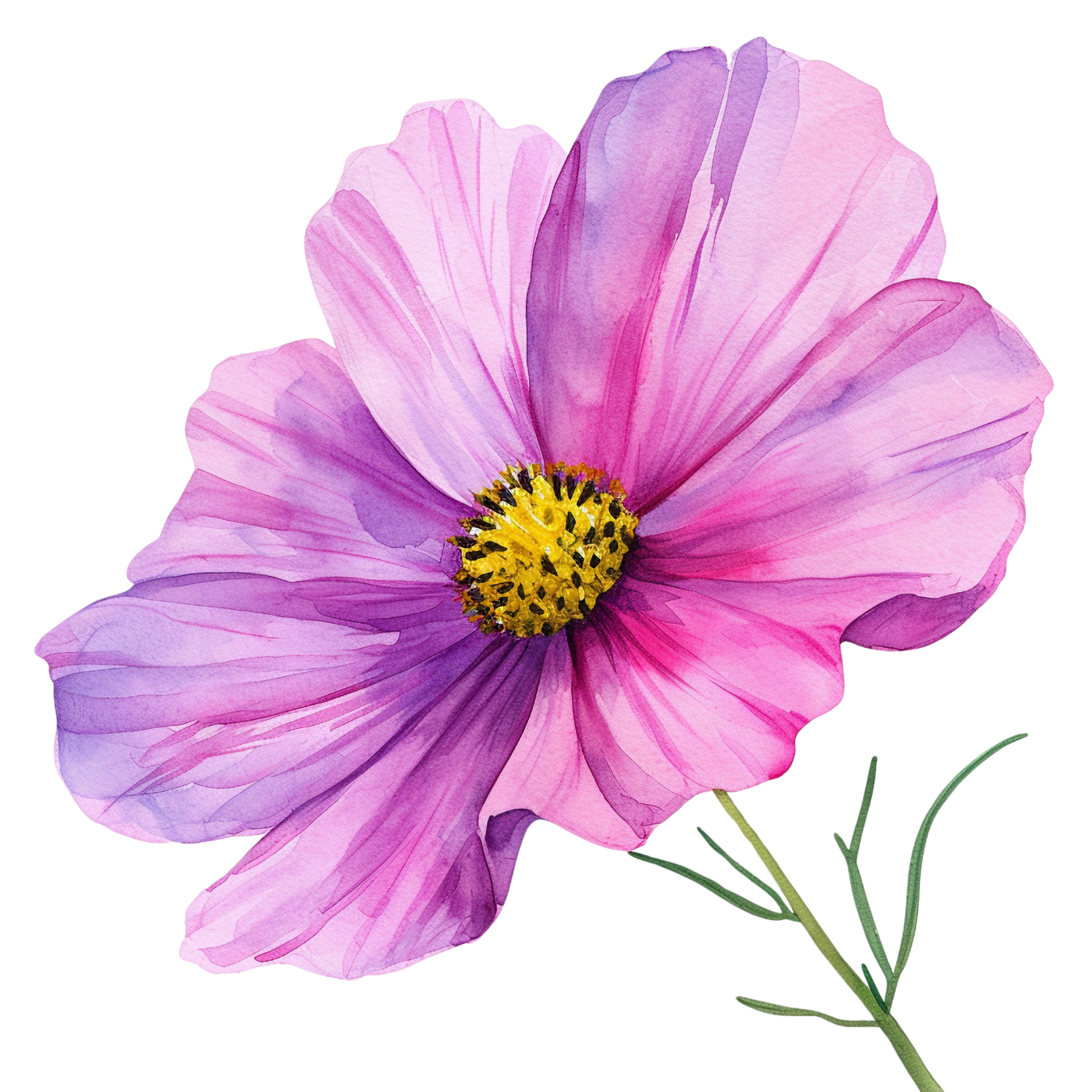What are the October birth flowers?
October is marked by the vibrant Marigolds and delicate Cosmos, each bringing its unique beauty to the autumn month. Marigolds, with their bold orange, yellow, and red hues, symbolize passion and creativity, reflecting the intensity and transformation of October. Cosmos, on the other hand, with their simple, symmetrical flowers, represent harmony and peace, offering a serene contrast to the dynamic energy of Marigolds.
In this blog post, we will explore the fascinating world of birth month flowers, their meanings, origins, and interesting facts. We will also discover how these flowers inspire art, creativity, and thoughtful gift ideas. So, let’s embark on this journey and uncover the beauty and meaning of October birth month flowers.
Related Post: Birth Flowers for all 12 months
History & Origin of Marigolds

Marigolds, scientifically known as Tagetes, have a long history that spans across continents, from the Americas to Europe and Africa. The name ‘Marigold’ is believed to have been derived from ‘Mary’s Gold,’ a name given to the flower in honor of the Virgin Mary in early Christianity. In their native Mexico and South America, Marigolds were considered sacred by the Aztecs and were used in religious ceremonies and medicinal practices.
The connection of Marigolds to October can be attributed to their peak blooming season in the fall and their prominent role in Dia de los Muertos (Day of the Dead) celebrations in Mexico, where the flowers are used to honor and remember deceased loved ones. This tradition, coupled with the flower’s vibrant colors that match the autumn palette, makes Marigolds a fitting emblem for October.
What does Marigolds mean?
Marigolds are rich in symbolism, varying with their vibrant colors:
- Orange Marigolds symbolize warmth, enthusiasm, and success, reflecting the vibrant energy and transformation of the fall season.
- Yellow Marigolds represent joy, celebration, and positive energy, bringing a touch of sunshine to any occasion.
- Red Marigolds convey strong emotions of passion and creativity, echoing the intensity of their fiery hues.



Overall, Marigolds are often associated with the sun’s power, symbolizing passion, creativity, and the cycle of life, death, and rebirth.
How to care for Marigolds
Caring for Marigolds is relatively straightforward, making them a popular choice for gardeners of all levels:
- Sunlight: Marigolds thrive in full sun, needing at least 6 hours of direct sunlight each day to bloom abundantly.
- Soil: These flowers prefer well-draining soil and are quite adaptable to various soil types, though they flourish in moderately fertile ground.
- Watering: Water Marigolds at the base to avoid wetting the foliage, which can lead to fungal diseases. Allow the soil to dry out slightly between waterings, as Marigolds are somewhat drought-tolerant.
- Deadheading: Remove spent blooms regularly to encourage continuous flowering and maintain the plant’s appearance.
- Spacing: Give Marigolds enough space for air circulation to prevent disease, planting them about 8-10 inches apart.
Interesting or less known facts about Marigolds
- Sacred in Many Cultures: Marigolds have held sacred significance in Hinduism, used in religious ceremonies and festivals to honor deities.
- Natural Dye: Historically, Marigolds have been used to produce a vibrant yellow dye for fabrics, food, and cosmetics.
- Pest Deterrent: Marigolds are known to repel certain pests in the garden, making them a popular companion plant in vegetable gardens to protect against nematodes and other insects.
- Symbol of Grief: In Victorian times, Marigolds symbolized grief and despair, contrasting with their more modern associations with celebration and remembrance.
History & Origin of Cosmos

Cosmos, with their simple, elegant blooms, originate from Mexico. The name ‘Cosmos’ is derived from the Greek word for ‘order’ or ‘harmony,’ reflecting the orderly arrangement of the flower’s petals and its balanced form. Cosmos were introduced to the English gardening world in the late 18th century by Spanish priests who grew them in their mission gardens in Mexico.
The association of Cosmos with October can be attributed to their late blooming season, often lasting until the first frost. The flower’s ability to add color and vibrancy to the garden in late autumn, a time when many other flowers are fading, makes it a symbol of enduring beauty and grace as the seasons change.
What does Cosmos mean?
Cosmos flowers carry a simple yet profound symbolism:
- Harmony and Order: Reflecting their name’s Greek origins, Cosmos symbolize the order and harmony in the natural world, embodying balance and peace.
- Beauty in Simplicity: The elegant simplicity of Cosmos flowers suggests modesty and the beauty found in simplicity, encouraging an appreciation for the uncomplicated aspects of life.
- Joy and Love: With their bright and cheerful blooms, Cosmos also represent joy in love and life, making them a delightful symbol of happiness.
How to care for Cosmos
Cosmos are known for their low-maintenance care requirements, making them a joy for gardeners:
- Sunlight: Cosmos flourish in full sun, requiring at least 6-8 hours of direct sunlight each day for optimal growth and blooming.
- Soil: These flowers are not fussy about soil and can thrive in average, well-draining soil. They are particularly tolerant of poor soil conditions, which can actually lead to more abundant blooms.
- Watering: Water Cosmos regularly, especially during dry spells, to keep the soil evenly moist. Once established, Cosmos are somewhat drought-resistant.
- Deadheading: While not strictly necessary, removing spent flowers can encourage more blooms and extend the flowering period.
- Fertilization: Cosmos generally do not require fertilization. In fact, too much fertilizer can lead to lush foliage at the expense of blooms.
Interesting or less known facts about Cosmos
- Space Connection: The name ‘Cosmos’ not only reflects the order and beauty found in nature but also resonates with the vastness and harmony of the universe, drawing a poetic parallel between the floral and celestial realms.
- Butterfly Magnet: Cosmos flowers are particularly attractive to butterflies, making them an excellent choice for butterfly gardens or anyone looking to attract more wildlife to their outdoor space.
- Self-Sowing: Cosmos have a self-sowing tendency, meaning they can easily spread and return year after year, bringing effortless beauty to the garden.
- Edible Petals: The petals of Cosmos are edible and have a mild, sweet flavor, making them a colorful addition to salads, desserts, and garnishes.
October Birth Flower Comparison
| Month | Birth Flower | Characteristics | Symbolism |
|---|---|---|---|
| October | Marigold | Bright orange and yellow colors, robust and hearty | Creativity, passion, resilience |
Cosmos  | Delicate, daisy-like flowers in shades of pink, white, and red | Harmony, peace, order |
What are the popular October birth flower gifts?
Marigolds and Cosmos, with their vibrant colors and meaningful symbolism, offer a variety of gifting options perfect for October celebrations:
- Mixed Bouquets: Create a dynamic bouquet featuring the fiery hues of Marigolds and the delicate, starry blooms of Cosmos for a gift that captures the essence of October.
- Gardening Kits: For the green-thumbed, a gardening kit with Marigold and Cosmos seeds can provide the joy of growing these beautiful flowers from scratch.
- Themed Artwork: Art prints or paintings featuring Marigolds and Cosmos can make for a thoughtful gift, bringing the beauty of October’s birth flowers indoors.
- Floral Jewelry: Choose or commission jewelry pieces inspired by the shapes and colors of Marigolds and Cosmos for a unique and wearable gift.
Here are some more gift ideas featuring October’s birth flowers to explore.















What are some artistic or creative applications of October birth flower gifts?
Marigolds and Cosmos inspire a myriad of creative uses:
- Floral Design: Incorporate these flowers into wreaths, centerpieces, or garlands to add a touch of October’s warmth and vibrancy to any setting.
- Botanical Prints: Use the distinct forms of Marigolds and Cosmos for botanical printmaking, creating unique art pieces for home decor.
- Fashion Accessories: Design accessories like scarves, headbands, or brooches featuring Marigold and Cosmos motifs for a stylish nod to October’s birth flowers.
- Tattoo Art: A tattoo of Marigolds can symbolize passion and creativity, while Cosmos can represent harmony and peace, making for deeply personal and symbolic body art.
Conclusion
October’s birth flowers, Marigolds and Cosmos, embody the dynamic contrast of autumn with their bold colors and delicate forms. These flowers remind us to embrace change, celebrate life’s vibrant moments, and find peace in simplicity. Whether through gardening, floral arrangements, or artistic expression, Marigolds and Cosmos offer endless opportunities to connect with the beauty of nature and the essence of October.
10 FAQs
What are October’s birth flowers?
Marigolds and Cosmos.
What do Marigolds symbolize?
Passion, creativity, and the cycle of life.
What is the meaning behind Cosmos?
Harmony, peace, and beauty in simplicity.
Can Marigolds and Cosmos be grown together?
Yes, their differing heights and forms can complement each other in the garden.
Are Cosmos flowers edible?
While Cosmos petals are not toxic, they are not commonly eaten.
How long do Marigold flowers last?
With proper care, Marigold blooms can last from late spring until the first frost.
Do Cosmos attract wildlife?
Yes, they are particularly attractive to butterflies and bees.
Can Marigolds be used for pest control?
Yes, Marigolds are known to repel certain garden pests.
How can I extend the vase life of Cosmos?
Cut the stems at an angle and change the water every few days to prolong their freshness.
Are Marigolds annual or perennial?
Most Marigolds are treated as annuals, although some species are perennials in warmer climates.

